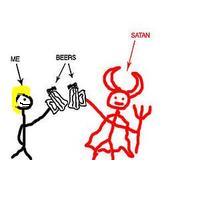Some various stuff I learned from podcasts this week--
On the BBC's "In Our Time", Melvyn and guests discussed the beginning of the Iron Age in Europe and what it meant. It's difficult to pin these types of dates down (this is especially true for the Bronze Age) as they aren't homogenous even within Europe. It began between ~1200 and 1000 BC in Europe (around a century earlier in the Near East.) It followed a period called the Bronze Age Collapse, which was caused by the collapse of some Near Eastern kingdoms like the Hittites and the disruption of Egyptian rule in places like Syria. The importance of trade routes from the making of bronze was that a big source of tin was Afghanistan although it also came from sources closer to home, like the Czech Republic. The trade routes were already in place from such other precious goods as jade. Jadeite hand axes have been found all the way to Scotland. Here is a longer story about why the switch from bronze to iron made sense. Other than the problem of tin supply, bronze is hard to work with. And here is an article on why dates are hard to pin down and sometimes the Iron Age is broken into First and Second.
Guardian Science Weekly had a story about a new clock on display at the British Museum called the Chronophage, or Time-Eater as you can tell from the etymology. It was created by a British engineer and inventor named John Taylor who had previously designed heat elements in electric tea kettles (apparently ~75% of such kettles in England contain his handiwork.) He was inspired by the work of 18th century British clockmaker John Harrison who was bedeviled by how to make a clock without gears that needed oiling. The oils available at the time were limited and costly and/or inappropriate. Goose grease, for instance, freezes rock solid when it gets cold.
Taylor's clock was inspired by the escapement (the source of the ticking sound) in an old clock of Harrison's. Taylor meant it both as an homage to Harrison and to remind people that their time is ticking away. Here is a video of the sister clock at Corpus Library, Cambridge. Here is what just the escapement looks like:
You can clearly hear it plugging away in the video although the grasshopper on this one (this is the Science Museum version) looks a little less scary. And also looks more like a fly.
Finally, I listened to an episode of To the Best of Our Knowledge called "Nature Stories" and the whole episode was good. A scientist called David Rothenberg recorded himself playing the clarinet in a duet with some humpback whales who responded to the music. They can respond to new sounds much more agilely than birds. I also didn't know that only male whales sing, although it's no longer clear that it's for mating purposes as was first thought.
Next was an artist called Jennifer Angus who collects insects to use in her artwork, large scale mural-like installations. Some people are disgusted, some are disgusted and intrigued and at least one said it was wrong of her to cause the insects to die for her art. She says she sees them as ambassadors for their species. One thing the audio program couldn't do was show me what her art looked like so here's a link to the Google image search and an example:
Nature writer Anne Fadiman talked about how she and her brother enjoyed collecting and killing butterflies as children. She said it didn't dawn on her immediately she was killing them (or rather, the implications of killing them) but she said they were horrified when it dawned on them. She said it must be what hunters feel like, to own a piece of nature.
Finally, Christopher Benfrey, an English professor, wrote a book about how New England went hummingbird crazy in the 19th century. This includes writers from Emily Dickinson to Mark Twain. There was also a painter named Martin Johnson Heade (pronounced "heed") who painted them. They said his paintings were really color saturated, almost impressionistic. I was curious:
Wow! You can see this in person at the National Gallery in Washington.
He says that Emily Dickinson often mentioned hummingbirds in her letters and how reading was akin to their actions except the reader "sips words." The interviewer asked if that wasn't appropriate since her poetry had a hummingbird-like quality.




No comments:
Post a Comment